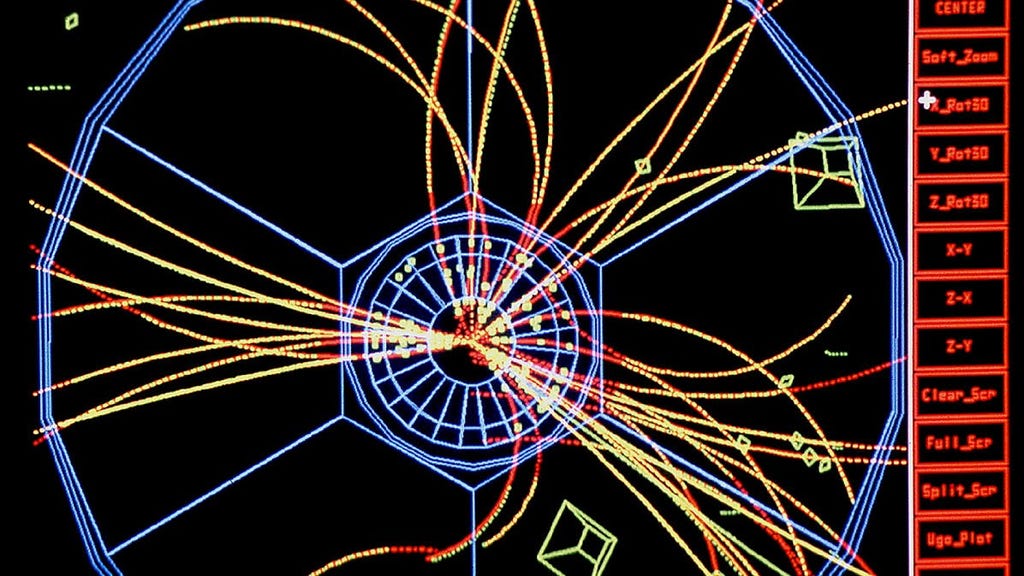The 2023 Nobel Prize in Physics and Chemistry, awarded for contributions to the development of artificial intelligence (AI), resonates deeply with personal experience. Over three decades ago, in the nascent stages of AI research, a project aimed at training an AI to identify quarks, fundamental particles that constitute matter, was undertaken. The ambition was grand, but the computational resources of the time proved a significant constraint, hindering the project’s full potential. This anecdote highlights the remarkable progress made in AI and computing power, enabling achievements that were once considered computationally impossible. It also underscores the persistent pursuit of scientific understanding, driven by human curiosity and enabled by technological advancement.
The quest to identify quarks using AI represents an early attempt to apply computational intelligence to complex scientific problems. Quarks, being elementary particles, are not directly observable but are inferred through their interactions within larger particles like protons and neutrons. Identifying these subtle signatures requires sophisticated pattern recognition capabilities, a task that was envisioned for AI. The rationale behind using AI stemmed from its theoretical potential to analyze vast amounts of data, discern intricate patterns, and ultimately, learn the underlying physics governing quark interactions. This early endeavor, though limited by technological constraints, foreshadowed the transformative role AI would eventually play in scientific discovery across various disciplines.
The limitations encountered during this pioneering project stemmed primarily from the computational power available at the time. The algorithms required to train an AI for quark recognition demanded extensive processing capabilities to handle the massive datasets generated by particle accelerators. The computers of the era were simply not powerful enough to perform these calculations efficiently. This computational bottleneck presented a significant hurdle, restricting the complexity of the AI models that could be developed and the amount of data they could process. Furthermore, the algorithms themselves were in their early stages of development, lacking the sophistication and efficiency of modern AI algorithms. The combination of limited computational resources and nascent algorithms led to a situation where the envisioned potential of AI could not be fully realized.
The contrast between the limited resources of the past and the present-day capabilities in AI research is stark. Today, advancements in computing hardware, particularly the development of Graphics Processing Units (GPUs) and specialized AI chips, have dramatically increased the speed and efficiency of complex computations. This, coupled with the development of sophisticated deep learning algorithms, has enabled the training of highly complex AI models capable of handling vast datasets and performing intricate pattern recognition tasks. These advancements have paved the way for groundbreaking applications of AI in diverse fields, including image recognition, natural language processing, and drug discovery, among others. The progress achieved in AI and computing power underscores the exponential nature of technological advancement and its profound impact on scientific research.
The awarding of the Nobel Prize for contributions to AI acknowledges the transformative impact of this field on scientific discovery. AI has evolved from a theoretical concept with limited practical applications to a powerful tool that is revolutionizing various scientific disciplines. Its ability to analyze complex data, identify patterns, and generate predictions has led to breakthroughs in areas such as particle physics, astronomy, and medical research. AI can now assist scientists in interpreting complex experimental data, automating tedious tasks, and even suggesting new avenues of research. The recognition of AI’s contributions through the Nobel Prize further solidifies its importance as a driving force in scientific progress.
Furthermore, the story of the early attempts to identify quarks using AI serves as a testament to the persistence of human curiosity and the relentless pursuit of scientific understanding. Despite the limitations encountered in the early stages of AI research, the vision of using computational intelligence to unlock the secrets of the universe remained a compelling driver for innovation. The challenges posed by limited computational resources and nascent algorithms did not deter researchers but rather spurred them to develop better tools and techniques. This unwavering dedication to scientific exploration, coupled with the remarkable advancements in AI and computing technology, has ultimately led to the transformative applications of AI witnessed today, fulfilling the promise envisioned decades ago. The journey from the early days of AI research to its current prominence highlights the importance of perseverance, innovation, and the collaborative spirit of scientific inquiry.














